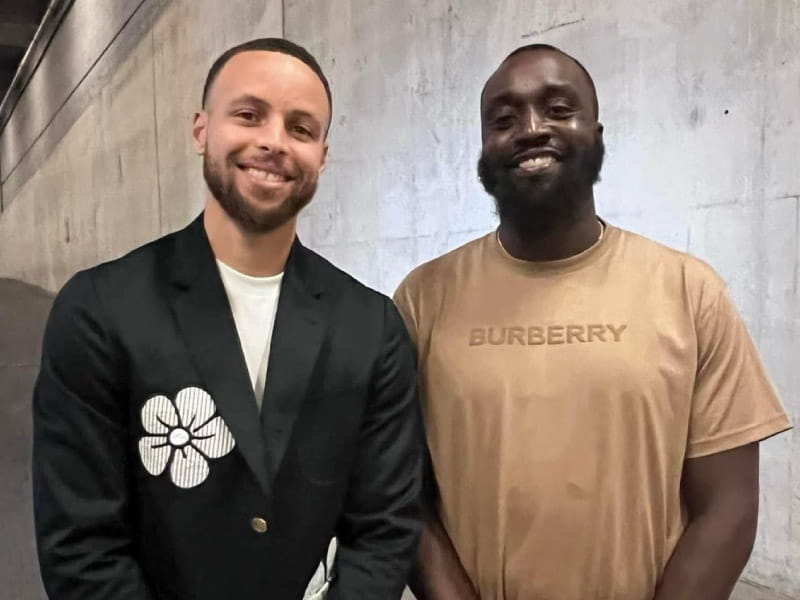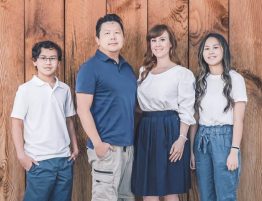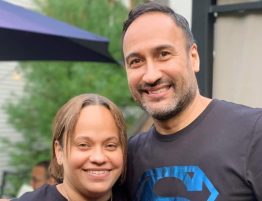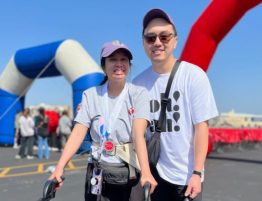
Omar Carter was hoping to catch the attention of an NBA scout when he walked onto the basketball court for a pro-am game in Charlotte, North Carolina.
Carter had shown a lot of promise throughout his basketball career but hadn’t been drafted yet. NBA superstar Steph Curry, Carter’s good friend and high school teammate, told ESPN that Carter pushed him and could “physically dominate or out-skill” other players.
Then 25, Carter felt a little tired as he warmed up for the game. He shook it off.
The game started. Carter bounce-passed the ball to his teammate then backpedaled away from the hoop. He faltered and tried to catch himself. His footsteps stopped and he fell.
His body looked lifeless, splayed on the court.
The gym went quiet.
Several people in the stands called 911. Others started praying.
Claudia Ward, a spectator who knew CPR, rushed to the floor.
She shouted, “What’s his name?”
A man answered her, “Omar.”
She leaned closer and started saying, “Omar, Omar. Stay with me, Omar.”
She started doing chest compressions.
A woman ran over in high heels and kicked them off. She said, “I’m a cardiac nurse” and took over CPR from Ward.
Someone else ran upstairs to get an AED, or automated external defibrillator, a machine that can help restore a heart’s normal rhythm. It was in a room with a locked door. “Break it down!” shouted a woman who worked for the facility.
The group ran the AED back down to the court. The cardiac nurse shocked Carter three times.
After the third shock, he gasped. He’d been without a heartbeat for 13 minutes.
Paramedics put him into a medically induced coma on the way to the hospital.
When he woke up a few days later, he blinked his eyes open and saw that he was hooked up to oxygen. His body was covered in cooling devices. He looked around the room, confused.
His doctor asked if he knew his name.
Carter answered, “Omar,” and then asked his own questions in return: “What day is it?” he said. Then, “Can I still play basketball?”
Carter learned that he had experienced a cardiac arrest during the game, when the heart suddenly stops beating. Cardiac arrest outside of a hospital is fatal about 90% of the time.
Doctors placed an implantable cardioverter defibrillator, or ICD, in his chest to monitor his heart’s rhythm. If the device detects a problem, it can shock the heart back into a normal rhythm.
At 16, Carter had been diagnosed with “athlete’s heart,” which describes physical and electrical changes to the heart as a result of intense training. But he’d never had any issues. He saw one of the top sports cardiologists in the country at the time and had gone through regular checkups. His heart muscle hadn’t grown any thicker and his doctors believed he faced a low risk of any serious heart issues.
So, at the time, doctors couldn’t tell Carter exactly why his heart stopped on that July day in 2013. But one thing was clear: His basketball career was over.
When he got home from the hospital, he had to face the void of a life without basketball, a sport that had consumed his life since he was old enough to dribble a ball. He struggled with debilitating depression and grief.
“The first few months were really hard,” he said. “I had been ‘Omar Carter the basketball player’ for 25 years. I had to start over.”
Losing basketball wasn’t just a loss of identity for Carter, it was also a loss of his livelihood, his future, and many of his relationships. He spent months trying to figure out what he wanted to do next.
His mom suggested channeling himself into an organization that could help other athletes. Her idea struck a chord with him. He launched the Omar Carter Foundation to raise awareness about cardiac arrest and to increase the number of people who know CPR.
A decade later, the Omar Carter Foundation partners with universities, sports teams, youth organizations, businesses and communities to offer CPR and AED education and spread awareness about cardiovascular screenings and prevention for athletes and their families. Carter also has shared his story at events across the country.
The foundation gave Carter the purpose he needed after losing basketball. It’s also given him a way to connect with other athletes who have experienced cardiac arrest, which he hopes helps people cope with the emotional and mental side of heart issues.
“People need someone to talk to while they’re going through the toughest parts of this,” he said.
Carter has found immense value in sharing his story. But one response surprised him.
On a 2019 date with a woman named Morgan, she said, “Your story sounds familiar. I think my mom helped save your life.”
It turned out that Morgan was outside the arena that night, waiting for her mom – Claudia Ward, the woman who’d rushed out of the stands and onto the court – to celebrate her 21st birthday with her. Indeed, her mom’s delay was helping save Carter’s life.

Ward is now Carter’s mother-in-law. He and Morgan married in March 2021 and live in Charlotte.
“I can’t imagine them not being together and having Omar in our family,” Ward said. “You just never know how the universe is going to connect you to someone.”
Stories From the Heart chronicles the inspiring journeys of heart disease and stroke survivors, caregivers and advocates.






